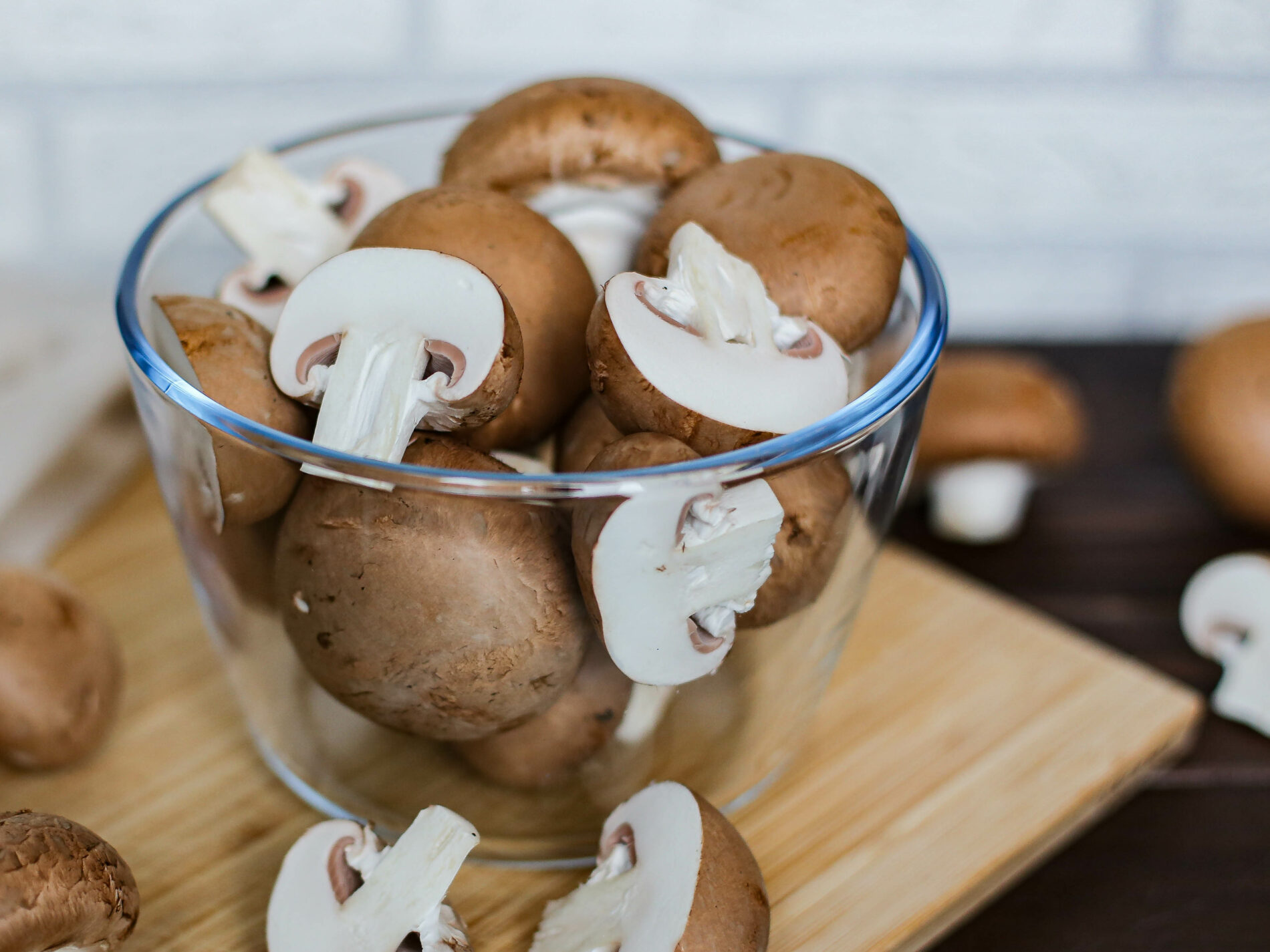Today we know a lot about these representatives of the Fungi kingdom but back in the days there was no consensus on what a mushroom actually is, nor was there a single word for it. Among other names, a mushroom in 14th century England was called a toadstool, meaning that reptiles preferred it for sitting. The “mushroom” might have been derived from the French “mousseron” that had reference to the word “moss”.
The kingdom has an amazing diversity. A typical mushroom is a fruiting body of a fungus that might be edible, unpalatable, poisonous, or even psychoactive. Some help producing life-saving antibiotic penicillin, the others are simply perfect on top of your creamy risotto.
Mushrooms vary in sizes and forms: from buttons and caps to bizarre puffballs, jelly, earthstars, corals and bird’s nests mushrooms (they actually look like tiny egg-filled birds’ nests). As for the colours, the fungi kingdom runs the whole gamut from classic brown and yellow to indigo, dark green and black.
Wash it – or not?
Some mushrooms have gills that make them look like a sponge. And if something looks like a sponge then it must act like a sponge when liquid is around, correct? This is logical but it’s actually a long-lasting kitchen myth that says that one must not wash fungi if they don’t want to dilute the flavour.
But don’t be afraid, you won’t do any harm to fruiting bodies – they already contain about 85-95% moisture. An extra couple of grams of water clung to a cap during wash is no deal at all. This additional amount will evaporate in a matter of seconds. Hardly enough to ruin your recipe.
Speaking of recipes
One of the simplest preparations that must be your kitchen staple is garlic mushrooms. Soft, buttery, mouthwatering – these bad boys can be enjoyed all day long from the very breakfast to the late-night dinner.
Put 50 g of butter into a pan sitting over low heat. Add ½ chopped onion, sauté for 10 minutes until fragrant. Then add 500 g of mushrooms of your choice (like cremini) and cook for 5-7 minutes until they start to brown.
Pour in a couple of tablespoons of white wine, reduce it, add a sprig of thyme and 4 minced cloves of garlic. Sauté for extra 1-2 minutes, add chopped parsley, season generously with salt and pepper. You are ready to serve one of the easiest yet pleasant and tasty appetizers made in no time.











What do you think?